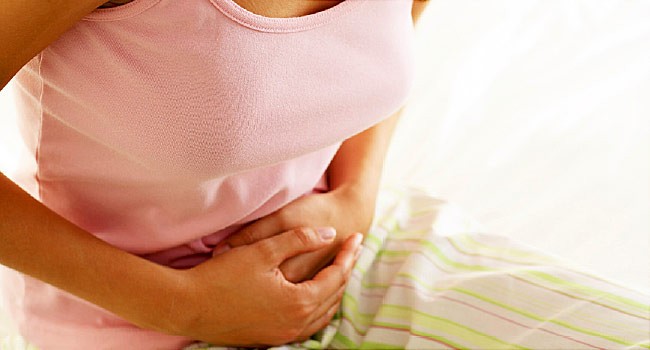What is Endometriosis?
Endometriosis is an extremely painful disorder where the tissues that lines the inside of the uterus (endometrium) starts growing on the outside of the uterus (womb). Endometriosis usually includes the tissues lining the pelvis, fallopian tubes and ovaries.
During Endometriosis, the endometrial tissues breaks down and bleeds. This tissue doesn’t have any way to exit from the body so it gets trapped. Endometriosis causes chronic pain during your periods. Also, fertility can be affected as this condition might create issues during conceiving a baby.
What are the different stages of endometriosis?
Endometriosis is a reproductive disorder that normally shows different signs & symptoms in every patient and in some cases, there are no major symptoms. The condition of endometriosis is divided into four stages which are (1) Minimal, (2) Mild, (3) Moderate and (4) Severe.
In Minimal endometriosis, there is a presence of few small wounds, lesions or implants over the ovary without any scar tissue. If lesions are seen over the ovary and the pelvic lining as light with shallow implants & scar tissues, it is mild endometriosis.
Under Stage- 3 many deep implants and lesions are present on one or both ovaries whereas severe endometriosis is a presence of thick bands of scar tissues, adhesions with many deep implants on both ovaries, fallopian tubes and in bowel region.
What are the first signs of endometriosis?
Endometriosis is a condition where an overgrowth of the endometrium occurs outside the uterus and grows over ovaries, fallopian tubes, bowel, and tissue linings of the pelvis. This abnormal growth of endometrium causes inflammation and other signs like pelvic pain, pain during intercourse, excessive bleeding, discomfort in bowel movements, fatigue, nausea, diarrhea, etc.
A woman suffering from this condition may experience lower back pain during the menstrual periods, abdominal cramps before one or two weeks of menstruation and also during menstruation. In some cases, women also face difficulties in getting pregnant.
What causes Endometriosis?
The exact cause of Endometriosis is not yet known but studies suggest that it can be caused due to some factors such as:
-
Retrograde menstruation- In this condition, menstrual blood that contains endometrial cells usually flow back into the pelvic cavity through the fallopian tubes instead of passing out from the body. These endometrial cells stick to the pelvic organs and pelvic walls where they thicken and start bleeding over the course of the menstrual cycle.
-
Changing of the peritoneal cells- This is also called induction theory. Endometriosis can be caused due to the transformation of peritoneal cells.
-
Embryonic transformation of cells- Hormones like estrogen can transform embryonic cells in the early stages.
-
Surgical scar implantation- After a surgery like C-section or hysterectomy, the endometrial cells can attach itself to a surgical incision.
-
Endometrial cells transport- The tissue fluid (lymphatic) or blood vessels can transport the endometrial cells to other body parts.
-
Immune system disorder- If there is a problem with the immune system, it may make the body impossible to destroy and recognize the endometrial tissue which grows outside the uterus.
Risk factors that make you more susceptible in developing Endometriosis is:
-
Unable to conceive
-
Starting your period very early in life.
-
Having your menopause at a very old age.
-
Menstrual cycle less than 27 days.
-
High levels of estrogen in your body or exposure to a high level of estrogen produced by your body.
-
Low body mass
-
Excessive Alcohol consumption
-
One or more family members having Endometriosis.
-
Abnormalities in the uterus (womb).
The symptoms of Endometriosis can end permanently if you experience menopause and can end temporarily if you get pregnant. Taking estrogen supplements can also trigger Endometriosis in some women.
What is the best treatment for endometriosis?
Endometriosis can reoccur subsequently and its treatment controls the abnormal growth of endometrium. The treatment has an objective of reliving symptoms and enhancement of fertility. The course of treatment depends on the age of the patient, pain associated with the condition and stage of the disease.
Pain medications (Non-steroidal anti-inflammatory drugs) such as ibuprofen or naproxen are prescribed as an over-the-counter medication. Hormonal therapies in form of pills, injections or nasal sprays are advised that include hormonal contraceptives (birth control pills or patches), progestin therapy, Gonadotropin-releasing hormone agonist and antagonists, etc.
At Stages-03 and 04, conservative surgeries or hysterectomy (with or without removal of the ovaries) are performed to treat this condition.
What foods to avoid if you have endometriosis?
A woman should take care of her diet if she is suffering from endometriosis. Foods rich in fiber (fruits, vegetables, legumes), foods containing fatty acids (salmons, walnuts) and anti-oxidant foods like oranges, spinach, berries, green tea are recommended for patients.
On the other side, those who suffer from this condition should avoid consuming Trans fat, gluten-containing foods, red meat, high FODMAP diet ( Fermentable oligo-, di-, mono-saccharides and polyols), alcohol and caffeine-containing items.
What are some natural remedies for endometriosis?
There are some natural remedies that can help in dealing with endometriosis. Hydrotherapy or heat can be included in methods to treat pain associated with endometriosis. Taking a hot or warm water bath or placing hot water bottles at the lower abdomen region can provide relief from cramps and pain.
Stress reduction therapies like relaxation response, mindfulness meditation, diaphragmatic breathing can be useful for decreasing cortisol levels in the body because endometriosis causes hormonal imbalance.
Doing pelvic massage with castor oil also gives relief from the pain of endometriosis. Other remedies can be the use of herbal supplements, light exercises and selection of anti-inflammatory foods, rest, etc.



